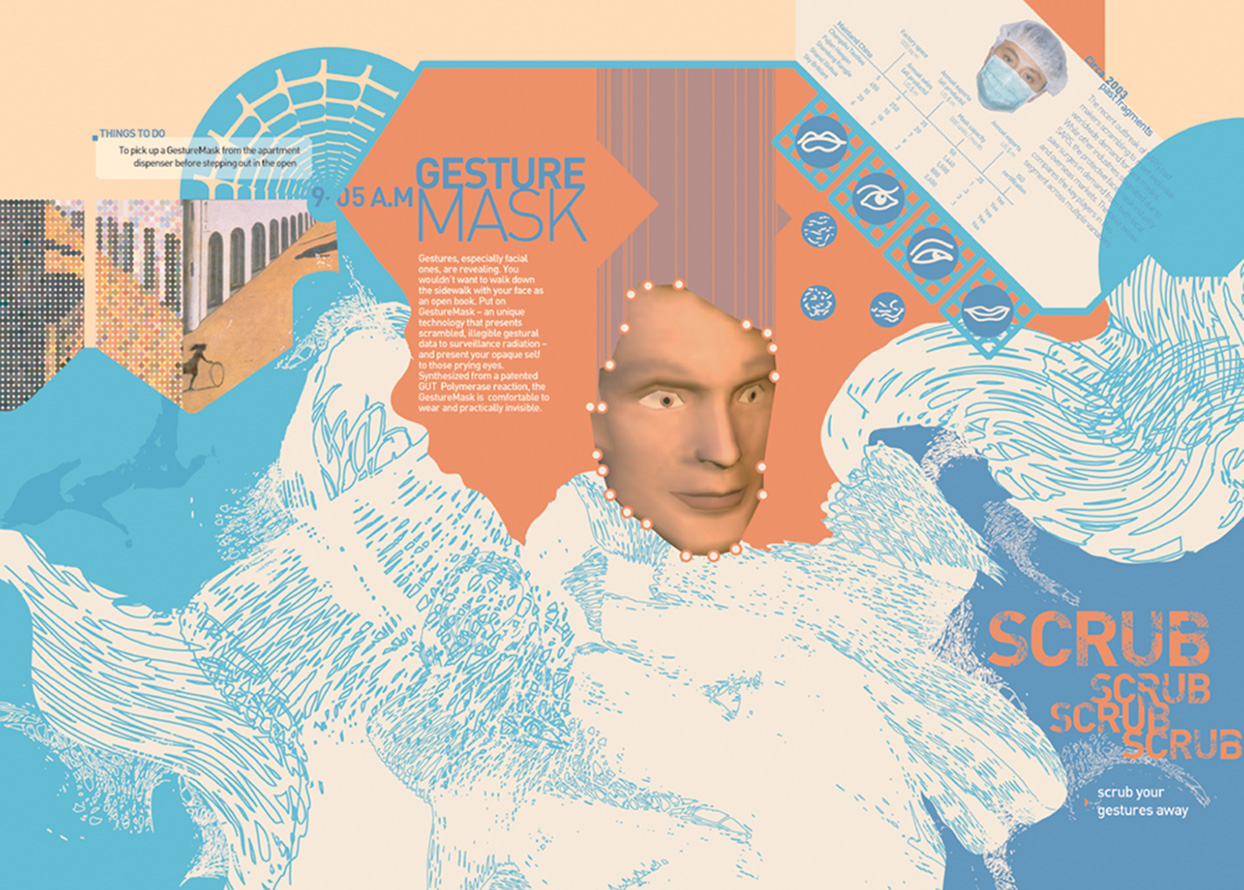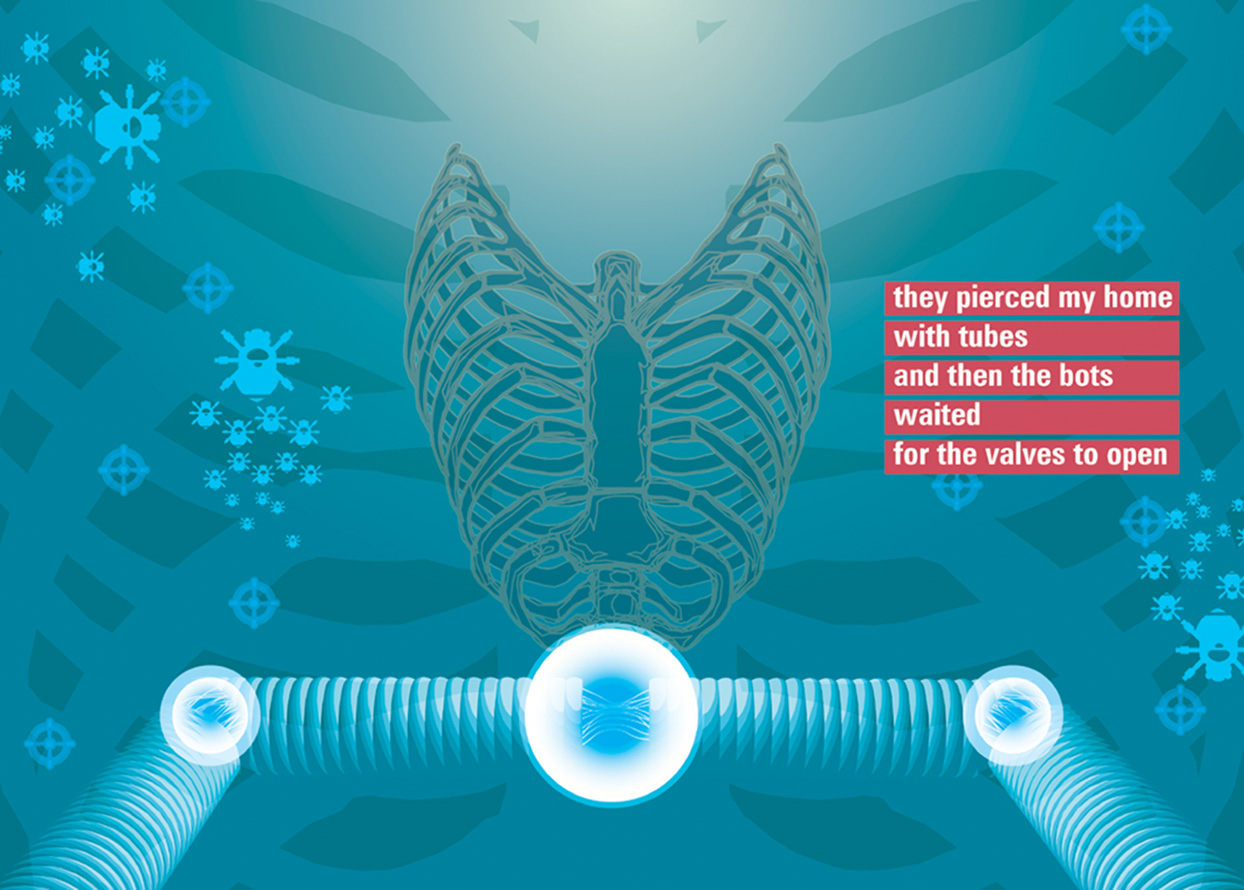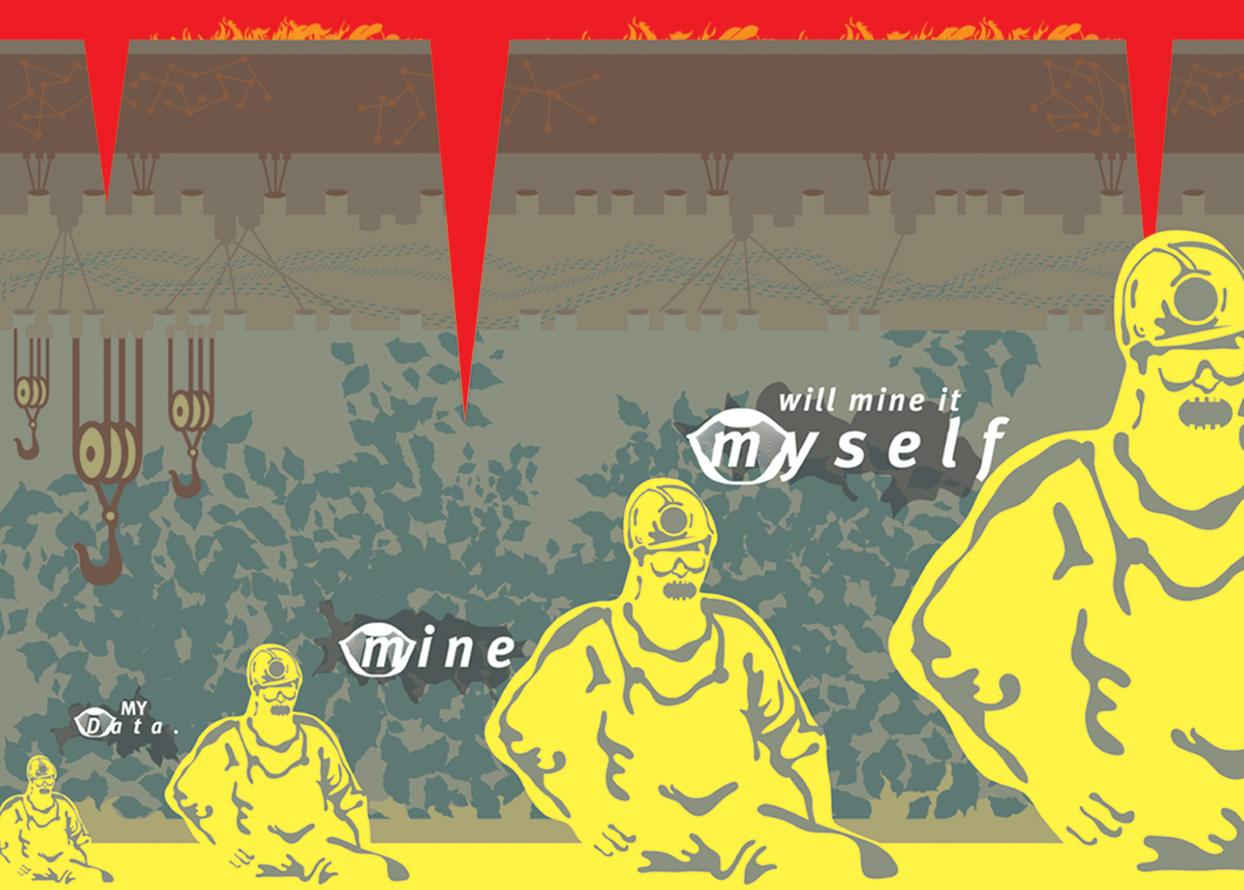Beware of the Dog!
The Public Domain in the Information Society
April 7, 2004essay,
Fear is a poor counsellor if we want to examine the potential of the information society. If we let ourselves be led by it we will remain stuck in a mass-media society, in which obsolete systems of power and knowledge still operate. According to Jouke Kleerebezem we must above all be vigilant ourselves and test the limits of the possibilities offered to us in a network society.




At the first ‘Doors of Perception’1 conference in Amsterdam in 1993, Bill Buxton, at the time a software engineer with the Xerox PARC research laboratory, introduced a powerful mantra when he explained what his interest in ubiquitous computing, better known as ubicomp, is based upon. Buxton’s ‘I want my desktop back’ became a modest hit in Mediamatic’s version, on the CD-ROM issued as a report of the conference.2 The encroachment of the computer out of its beige plastic housing, to occupy other parts of our physical environment – ‘in the woodwork’, as Buxton put it – has always been the goal of ubicomp. The computerization of the everyday environment is drawing the networks out of the house and office and into the street. The Internet and the telecommunications networks connect people and places on a rapidly expanding scale, creating new public and private spaces. Activities that used to take place primarily in the domestic environment, such as telephoning with a ‘fixed’ telephone, have become public. Activities that used to require visiting public places, such as obtaining information from government authorities or in libraries, on the contrary have moved into the private environment. With the rapid increase in so-called ‘hot spots’,3 the streetscape is increasingly being taken over by not only the mobile phone but other portable digital devices as well. The architectural, landscape, and information spaces are beginning to overlap. In optimal mobility, we are expected to communicate as much as possible. Commerce and industry are expending great effort in making all digital products and services available in any location. The advent of communication networks, in which public infrastructure has ended up above ground rather than below it, has ushered in a new era in the Early Information Age.
Computerization is moving forward unabated, without taking on the form of our familiar computer – box, screen, keyboard. Unlike what happened with the personal computer, the new computerization is geared to the computerization of the everyday physical environment and incorporates various objects and environments in digital networks. A habitat rich in data is put at our disposal, in which a dense network of connections encompasses and provides access to our everyday environment. The design of the public space, however, is still scarcely adapted to the manipulation of a flow of information. The woodwork offers sufficient space for processors, screens and simple control panels, yet it neither reflects nor facilitates in a more considered form the gradual emergence of what I call an information habit.4 The public space does not yet really provide room for the public collection and production of information. To genuinely be able to speak of an ‘information society’ in terms of meaning as well as function, this will have to change. We will not only have to have the option of collecting information in any location, we also have to be able to produce it. To this end, the nature of the transaction must be clearly readable from the activities undertaken and therefore from the technology used.
Sometimes the means of communication vaguely recall the unwieldy boxes that once gathered dust on or under our desks. Thanks to miniaturization the new devices have become elegant and highly fashion-sensitive gadgets. We find adapted versions of screen, keyboard and track ball (a classical mouse turned upside down) in mobiles, personal digital assistants, GPS scanners, automatic tellers, dashboards, kitchen appliances, remote controls, video and photo cameras, portable and household audio and video appliances, game consoles and of course in the laptop as well. The connecting networks are for the most part wireless and can find us anywhere. With the devices mentioned, information (sometimes co-ordinated by satellite and thus location-specific) is received by us and potentially made available to the network. ‘Computing’ is no longer something we do exclusively in our places of work or in our hobby rooms, at times set for the purpose. These days we ‘compute’ day in and day out, during work and in our free time. Thanks to the connecting networks we leave behind trails of information through physical reality.
Different Speeds
Information moves at the speed of light. Products and services that enrich our daily lives will try to accelerate to this standard. We want our wishes attended to. ‘Click and Go’. But physical reality is slow. Our own mobility and that of our goods is stuck at best at the speed of sound, and that, since the Concorde has been retired, is reserved for such professional speed demons as jet-fighter pilots and astronauts. The rest of us move slowly around the world, covering long distances over many hours and at the cost of a huge expense of energy. Our information is always one step ahead of us. Reservations precede us, our presence is widely announced in the network that organizes our movements and reported at the destination. Once we arrive we are logged into new networks, our mobile phones adapt to another environment, in which our credit cards are also accepted. While we get over jet lag with a fuzzy head and unsteady stomach, our chips are already fully at home in their new surroundings and working for us. The professional staff treats us with international courtesy, but the glances we exchange in the street are still somewhat uncomfortable. Meanwhile the local ubicomp has accepted our devices without distinction as to origin. Our data is absorbed into new databases. At each new contact with the network, they are recognized and fitted in without any problem.
In Bruce Sterling’s Islands in the Net, and in Neal Stephenson’s The Diamond Age, the main characters live in parallel realities in real time, 24 hours a day, seven days a week. They are never disconnected from the information network that tracks them, makes them visible and makes contact with others possible.5 The science fiction of the last 10 years is fast becoming everyday reality. Our presence is being reported and processed beyond the flow of information we set into motion ourselves. Surveillance cameras watch us as we go in or out, and the cameras of fellow travellers repeatedly record us and send these images on to other public environments. We are no longer merely anonymously present in holiday photo albums with a limited distribution; we appear increasingly on holiday and other personal websites, in weblogs and photologs – thus in the public information space. Mobile phone cameras have already been banned in many swimming pools, and in some countries, including Saudi Arabia, a general ban is even in place. The democratic potential for producing information in picture, sound and text, and its distribution to (semi-) public popular media perhaps challenge the norms of our privacy more than the ubiquitous surveillance cameras in the urban environment.6
The information society is a society in which the citizen consumes and produces information in equal measure. He or she is as much the object of uninterrupted observation by digital devices as the author and distributor of digital information. ‘Look up and smile’, read the headline, in Wired in November 1999, to an article about low-orbit surveillance satellites.7 But a Siemens MC60 or Nokia 7600 gets a lot closer. Every day thousands of private lives are being recorded in tens of thousands of photos in photologs and made public on the web.8
Communications networks are always open to traffic, without applying particular demands on the message, or checking its content. The Internet is no ‘sir’, as the newspaper once was. The network merely links the many ladies and gentlemen who are individually using information. The mobility of ‘our’ data – both in the sense of actively generated by us and passively applicable to us – knows no limits in speed and aspect. Our personal information is instantly available all over the world and we can be traced anywhere. Already, some products and services are also moving at the speed of information – products and services that can be computerized, such as text, images and sound, but also products and services that materialize virtually ad hoc, for instance ‘rapid prototyping’ or three-dimensional print processes.9 Any material that can be read or written through the intervention of digitization can thus move just as fast as the information with which it is written (coded). In this way a physical, everyday reality accompanies us to some extent, and environments adjust to our presence.
Ubiquitous computing plays a role in this. Environments become interactive. Although our velocity does not increase, the adjustments of our environment to our presence make it relative. After all, we prefer to be where our information is, and at the moment it gets there, as well. This is the fulfilment of an ‘information habit’.
Anonymous or Public / Seen or Unnoticed
To be seen or to remain unnoticed – that seems to be the question. Yet it will not be easy to remain unnoticed in a network society. The relationship between identity and anonymity is once again relevant, and the advent of so much new technology is making it the focus of debate. Unease and irrational fears arise because information and everyday experience are not synchronous. The confusion between ‘real’ and ‘virtual’ is leading many critics of new media and the Internet to spurious conclusions. For example, a virtual world is supposed to be lonely and antisocial, the Internet is supposed to be dominated by commerce or to primarily provide outlets for criminal activities. But at the same time the positive achievements of the Internet are generally grossly exaggerated. Making this confusion the subject of debate, however, is the last thing we should do. After all, the condition of the information habit is ‘real’. The conjunction of the architectural, landscape and information spaces is real. The confusion between private and public is not only real but also fruitful and can have emancipating developments. Our traceability is real as well, and the need to produce and consume information in equal measure is definitely real. If social and instrumental conditions do not develop to address this, we will never live in an information society, but in a traditional twentieth-century mass-media society, in which we once again get mired in traditional fears about already obsolete power mechanisms. Fears that are naive in a general, radical computerization, because they entail far too mechanical an idea of the organization of power. While the threats remain the same – discrimination, domination, exploitation, assault, extortion – in short, abuse of power – the form in which great and small evils touch us is continually changing. Traditional authoritarian power was often embodied by institutions and could be identified – and fought – through its central location and the apparatus of its domination. We should not forget that the forerunner of the Internet, the ARPAnet, was designed to make the military machinery and the military intelligence of the United States less vulnerable.10 However, in distributing the intelligence and the machinery of power we also distribute the danger, just as, according to Paul Virilio, we designed the crash when we designed the aeroplane.11 A network society offers neither the stability of the institutionalized good, nor a clearly localized evil. Knowledge and power are no longer concentrated in institutions and then distributed. They merely form occasionally recognizable patterns in the network. The individual development of an information habit will have to adjust to this kind of organizational and logistical innovations.
Investigating Possibilities
General information skills can certainly be learned. If they are not yet taught in traditional educational institutions, which mainly teach goal-oriented, training-related applications, they must be picked up in practice. This practice offers, as we have seen, a highly varied landscape of new conditions, in which the public and the private spaces are tested against one another, in a physical as well as an informational sense. Our use of and behaviour in these spaces is not without risk – but there is no alternative. Computerization is expanding at all levels of society. This does not mean that no alternative applications of our new environments should be attempted. They should be used and abused to investigate new possibilities and testing their limits. As producers more than as consumers of information, we shall have to realize that we are our own guard dogs here, that we must be alert users. The ‘we’ and the ‘here’, however, are relative concepts within a network, constantly in motion and constantly changing in composition and location. The integrity of our alertness is thus less dependent on a set group or a set place; in other words, it is not dependent on ‘institutionalization’: alertness means the openness with which we engage individually with constantly changing groups in constantly changing locations. Even our alertness is thus becoming mobile. After all, in the information society my data are my greatest possession. They are the building blocks of a society that still has to be invented. It is precisely this awareness that must be safeguarded from systems that fail to appreciate an informed and informing consumer as a full-fledged producer.
N.B. Recent thematic projects on the integration of the information space and public infrastructure include Fused Space (Stroom, SKOR and Premsela, www.fusedspace.org) and Ubiscribe at the Jan van Eyck Academie, Maastricht (www.ubiscribe.net). Fused Space is a competition, open to artists, designers and architects for ‘inspirational applications of new technology in the public space’. UbiScribe is a research project in which the limits of ‘publishing’ personal information in a network environment are examined.
1. The ‘Doors of Perception’ conference was initiated by the former Design Institute in Amsterdam and is now an independent foundation under the directorship of John Thackara. The conference, bringing together interested participants from the design, media and business worlds, has been held alternately in the Netherlands and India since 2000.
2. Doors of Perception CD-ROM, produced independently and bundled with Mediamatic vol. 8, no. 1, Amsterdam 1994. This highly praised conference report offers the user the possibility to put together his own Doors using lectures and contextually relevant content. No longer available.
3. ‘Hot spots’ are locations in the public space where, within the range of a wireless network, one can get access to the Internet. Some of these places are publicly available; others, for instance private or commercial networks, are mapped and publicized by network nomads. See for instance www.warchalking.org; wirelessbandit.nerdsunderglass.com.
4. ‘Remember Home?’ (1994) for Doors of Perception 2 ‘Home’: ‘Communication media pierce our dwellings to facilitate the settling of home in information technology. The poetics and politics of home in the age of information will equally guide the architecture of built and electronic space. The memory of architecture will model electronic space to the same extent as the hot links of new media will model different buildings. Thus a new set of practices, which will be known as our information habit, will come into being.’ (source: www.nqpaofu.com).
5. Bruce Sterling, Islands in the Net, Arbor House, New York 1988; Neal Stephenson, The Diamond Age, Bantam, New York 1995.
6. A new sort of street theatre is operating in New York, the Surveillance Camera Players: see www.notbored.org.
7. For more information on the technology used, see for instance www.notbored.org or www.spaceimaging.com.
8. See for instance www.fotolog.net.
9. For ‘rapid prototyping’ see for instance www.cc.utah.edu.
10. For the history of the ARPAnet, see for instance www.zakon.org or www.netvalley.com.
11. Paul Virilio, ‘Le musée de l’accident’, in Un paysage des événements, Galilée, Paris 1996.
Jouke Kleerebezem is a visual artist, author and researche and teachter. See further: www.nqpaofu.com.